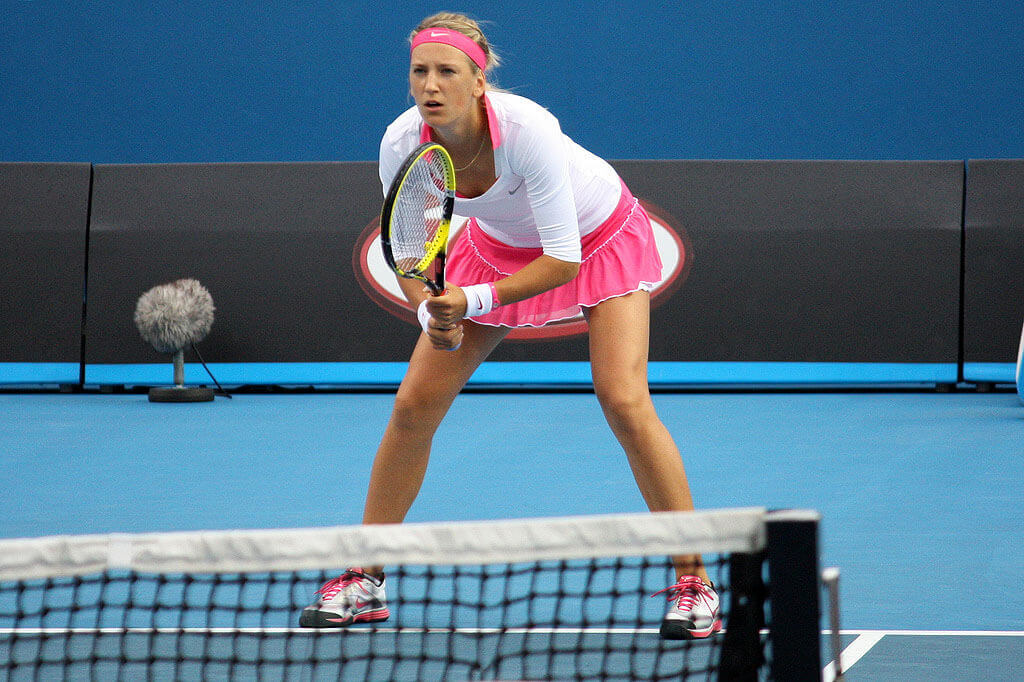Being able to pick up on the visual clues that are provided by your opponent’s shots is a learned skill, but it’s one worth learning as it will help you move to the right places at the right time to deliver solid return strokes. The ability to properly anticipate and quickly analyze your opponent’s shots can make all the difference between playing an offensive or defensive game, which will in turn determine whether or not you’re able to control the pace and rhythm of the game.
Anticipation is not necessarily something that can be boiled down to a set of drills you can practice; it’s more of an instinct that develops over time. Most seasoned pros will tell you that their anticipation skills were honed through years of experience, playing a whole lot of tennis against a wide variety of opponents. That being said, there are a few key concepts to keep in mind that will help you understand the logic and mechanics behind anticipation, so that you can have a head start in developing your own anticipation skills. Listed below are four vital tips that will help you sharpen your ability to anticipate your tennis opponent’s shots.
Properly assess your own shots.
Except for the serve, much of what your opponent is able to do depends upon the shot that you deliver to him/her. Your anticipation skills will greatly improve when you learn how to thoroughly understand and assess your own shot, and what options it will give to your opponent. For example, if you hit a shot to your opponent’s forehand corner, you know there’s a very high chance that they will respond with a forehand. The question then becomes whether they will hit their forehand down the line, cross court, as a drop shot or otherwise. You can attempt to discern these distinctions by closely observing things such as their stance, racket preparation, and upper body positioning. If you hit a deep shot, you can reasonably expect your opponent to respond with a lob. In this case, you may need to prepare to hit an overhead shot, and be cautious about closing the net too quickly. As Newton’s third law of motion states, “For every action, there is an equal and opposite reaction.” Study how your own shots evoke an “equal and opposite reaction” from your opponent.
Capitalize on unexpected advantages.
Whether intentional or by accident, there are times during a game when you gain an advantage over your opponent by hitting a shot that gets them off center or out of their rhythm. When these times come, you can do a much better job of anticipating their next shot based on the limited options your shot has afforded them. As professional tennis coach Kirk Moritz states, “You have to recognize when you’ve landed a punch.” A good rule of thumb is to watch the number of steps a player needs to take to return your shot. If your opponent can get to the majority of your shots within three steps or less, you know you’ve got them on the run when they’re taking more than three steps to return your shot. In these cases, you don’t need to stand still on the baseline and see if they’re going to get to your shot or not; close in on them proportionally, taking roughly the same amount of steps towards them as they’re taking back. As your opponent is scrambling to get to the ball, you can close in on them and set yourself up for a high-percentage return shot.
Observe your opponent’s body language and patterns of play.
If you spend enough time analyzing your opponent’s movements, you can begin to recognize certain patterns in their playing style. You can see if they favor hitting forehands or backhands based on their court positioning and shot selection. Also observe how your opponent positions his/her feet; wide stances are typically used with longer and more powerful shots, while narrow stances typically produce shots with less force or momentum. Another important visual cue is the position of your opponent’s racket face and shoulder. The position of your opponent’s racket face at the point of contact greatly influences the direction of the ball, and the direction that their shoulder is pointing (the shoulder of the swinging arm) gives you a good idea of where the ball may land.
Lead with your legs.
If you feel like you’re always a little late to the ball, it may seem as though your opponent is highly skilled at landing shots that are hard to predict. Surprisingly, this can have a lot more to do with your own response technique than your opponent’s actual skill. Many players tend to react to an opponent’s shot by leading with their arms instead of their legs. For example, if an opponent hits a shot to your forehand, do you react by sticking out your arm first and then following it up with leg motion? Skilled tennis players always lead with their legs, moving in the anticipated direction of the ball with their lower body first as they prepare for a return stroke. It is important to stay in a split step or wide stance as your opponent is making his/her move, so that no matter which direction the ball travels, you can be ready to respond accordingly.
As mentioned earlier, anticipation is a skill that is developed over time. In a sense, much of anticipation is “caught” rather than “taught”. Keep the above tips in mind to help you zero in on the fundamentals of anticipation, and watch your skills continue to improve with each match that you play.
